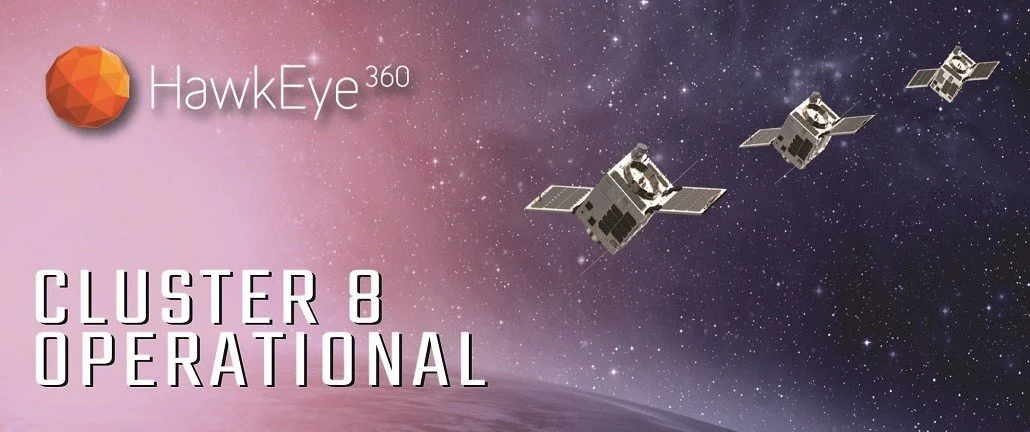HawkEye 360 Announces Initial Operating Status of Cluster 8
HawkEye 360 Inc., the global leader in defense technology for space-based radio frequency (RF) data and analytics, announced that its Cluster 8 satellites have entered initial operating status. Launched into a mid-inclination orbit in April 2024 alongside Cluster 9, these satellites have begun providing enhanced revisit rates and expanded data coverage over the world’s most populous regions.
“The entry of Cluster 8 into initial operating status significantly enhances our ability to offer the timeliest, most actionable, and broadest commercial RF data and coverage available today,” said Rob Rainhart, President of HawkEye 360. “The capabilities of this latest cluster allow us to dramatically increase our data collection efficiency and coverage across crucial global areas, reinforcing our mission to deliver unmatched geospatial insights.”
HawkEye 360 now operates a growing constellation of 29 satellites, which play a pivotal role in detecting, characterizing, and geolocating a diverse array of RF signals critical for communication, navigation, and security. The newly operational Cluster 8 features upgraded payloads that enable 5x data collection, broader bandwidths, and multi-band signal capture.
Alex Fox, Chief Growth Officer at HawkEye 360, adds, “The successful deployment and operation of Cluster 8 addresses our customers’ needs for more RF data and analytics at the mid-latitudes with new capabilities important to addressing the evolving threat environment. With Cluster 9 expected to be fully operational by early August, Cluster 10 launching in July, and Cluster 11 in the Fall, we are rapidly innovating and expanding our constellation to support our valued clients’ insatiable appetite for overhead RF data and analytics. “
